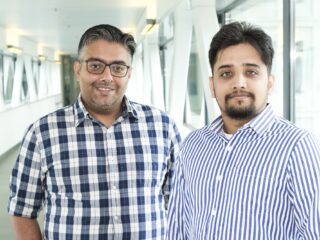Whether she works on cardiovascular disease or breast cancer. Whether she’s in Poland, Malaysia, Japan, or Rotterdam, for epidemiologist and biostatistician Siamala Sinnadurai (33) her focus is always the same: harnessing the power of data to personalize health care.
Sinnadurai’s interest in data science was piqued when she was a master’s student at University Malaya as well as Kyoto University researching various aspects of breast cancer. ‘I interviewed patients to collect data on their breast cancer condition. From that, I learned how to collect, record, and analyze data. And how important it is to do that in the right way.’
Smoking
For her doctoral research, Sinnadurai switched to cardiovascular disease and moved to Poland. There, she made a discovery that did not go unnoticed. ‘I was looking for new risk factors for cardiovascular disease, other than those already known such as smoking, high blood pressure, and cholesterol. After all, we know that collectively they explain less than half of all mortality, so there must be more to it.’
Sinnadurai focused on CHIP (clonal hematopoiesis of indeterminate potential), a phenomenon in which a population of cloned white blood cells arise from a hematopoietic stem cell with certain mutations. The phenomenon had previously been linked to aging and to an increased risk of leukemia. But thanks in part to Sinnadurai’s work, it is now becoming clear that people with CHIP mutations also have an increased risk of cardiovascular disease. It earned her an invitation to present her findings at the largest congress for cardiologists in America: the American Heart Association (AHA) Meeting in November 2023.
Pretty special for a relatively young data scientist, explains Prof. Peter van der Spek of Erasmus MC. He is a professor of Clinical Bioinformatics and works with Sinnadurai on cardiovascular research. ‘The link between CHIP and cardiovascular disease is really a hot potato in cardiology. If we can develop these findings into a form of screening, it could start to reduce healthcare costs enormously. There is nothing more fun for a professor than to see a good student achieve international success.’
Omics-data
Without her knowledge of data science, Sinnadurai could not have explored the link between CHIP and cardiovascular disease so comprehensively, she says. She combined multiple types of data to reconstruct the pathway from mutation to cardiovascular disease. She speaks of multiple “layers” of data. ‘I was lucky to have access to data from real patients with cardiovascular disease. I combined those with genetic data on the presence of CHIP mutations from next generation sequencing. This allowed me to make the link between the mutations and what is reflected in the patient’s body. Then we started looking at what happens at the protein level, with data from so-called proteomics.’
‘We want to dig deeper and add more layers of data’
In this way, Sinnaduari wants to further unravel the link between genetics and disease, layer by layer. Because Sinnadurai and her colleagues in Poland and Rotterdam do not yet understand everything. ‘We want to dig deeper and add more layers. I am thinking, for example, of data on metabolites: molecules involved in metabolism. We use metabolomics data for that. And data about the activity of monocytes and T cells, with AI Deepcell technology. In this way, we can write the complete story from molecule to clinic, with personalized medicine as the final goal.’
Garbage
Data science is hot and many researchers are working with data. That presents opportunities, but also has risks, Sinnadurai warns. ‘I can’t stress enough how important it is to understand your data. What kind of data are they? How have you stored them? If you don’t have that under control, your results will be unreliable. “Garbage in, garbage out,” we say.’ She therefore looks with admiration at the group of Prof. Peter Rijnbeek, professor of Medical Informatics at Erasmus MC. ‘He has developed a wonderful model to standardize patient data. That makes it so much easier to reliably compare information and draw conclusions.’
In the coming years, Sinnadurai wants to look beyond cardiovascular disease. ‘I now have knowledge of the CHIP phenomenon, and it would not surprise me if links can also be made to autoimmune diseases and Alzheimer’s disease. I therefore want to specialize in genetic epidemiology. Human diseases are so complex that a cross-disciplinary view is essential.’
Interested in a scientific career in data science?
Are you a young scientist and do you want to advance in data science? Siamala Sinnadurai has the following tips:
- Take a course in epidemiology or try to enroll in postgraduate courses in Public Health.
- Don’t be shy. Contact scientists who you find interesting and ask for help. Even outside your own institute and field.
- Make sure you know what you want and ask the right questions.
- Keep developing yourself.
Start your research career at Erasmus MC. Learn more about our job opportunities.



